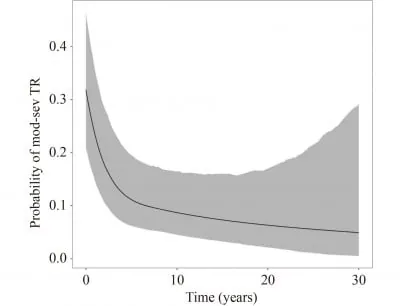
Revolutionary Insights into Tricuspid Regurgitation Post-Heart Transplant: What Patients Need to Know!
2025-08-27
Author: Ming
Groundbreaking Research Unveils Critical Findings
Erasmus MC in Rotterdam has made headlines with a pivotal study that uncovers vital information regarding tricuspid regurgitation (TR) in patients who have undergone biatrial orthotopic heart transplants. This research, published in *Frontiers of Medicine*, offers new perspectives on the prevalence and consequences of TR following surgery, shining a light on a topic that has puzzled medical professionals for years.
What Is Tricuspid Regurgitation?
Tricuspid regurgitation occurs when the heart’s tricuspid valve fails to close properly, causing a backflow of blood into the right atrium. For patients receiving biatrial orthotopic heart transplants—performed on individuals suffering from severe heart failure—understanding the aftereffects of TR is essential for improving outcomes.
Unveiling the Stats: TR Post-Surgery
The study focused on a substantial cohort of 572 patients who underwent heart transplants between 1984 and 2017, with follow-up echocardiograms painting a vivid picture. Immediately after surgery, nearly one-third (32%) experienced moderate-to-severe TR. However, encouragingly, this dropped significantly to 11% after 5 years and 9% after 10 years post-operation, hinting at a natural improvement over time.
Impact on Survival Rates
Despite the initial prevalence, moderate-to-severe TR during follow-up was linked to a worrisome increase in mortality rates, showing a hazard ratio of 1.07. This revelation underscores the vital need for ongoing monitoring of TR among transplant recipients.
Key Findings on TR Severity
The researchers noted that patients who received pre-implant mechanical support tended to have lower TR severity in their follow-ups, while those with left ventricular dysfunction saw an uptick in TR cases. Additionally, the study found a striking correlation between changes in TR severity and kidney function, measured by creatinine levels.
A Statistically Robust Analysis
Utilizing a mixed-model approach, the research team meticulously analyzed TR's progression and implemented a Cox model to evaluate its connection to mortality, effectively accounting for survival-related biases and strengthening their conclusions.
Shaping Future Clinical Practices
These findings radically alter the landscape of post-transplant patient care, suggesting that immediate surgical interventions for TR might not be necessary due to the observed decrease in severity over time. This insight could significantly influence clinical guidelines and patient management strategies, ultimately leading to improved long-term outcomes for heart transplant recipients.



 Brasil (PT)
Brasil (PT)
 Canada (EN)
Canada (EN)
 Chile (ES)
Chile (ES)
 Česko (CS)
Česko (CS)
 대한민국 (KO)
대한민국 (KO)
 España (ES)
España (ES)
 France (FR)
France (FR)
 Hong Kong (EN)
Hong Kong (EN)
 Italia (IT)
Italia (IT)
 日本 (JA)
日本 (JA)
 Magyarország (HU)
Magyarország (HU)
 Norge (NO)
Norge (NO)
 Polska (PL)
Polska (PL)
 Schweiz (DE)
Schweiz (DE)
 Singapore (EN)
Singapore (EN)
 Sverige (SV)
Sverige (SV)
 Suomi (FI)
Suomi (FI)
 Türkiye (TR)
Türkiye (TR)
 الإمارات العربية المتحدة (AR)
الإمارات العربية المتحدة (AR)